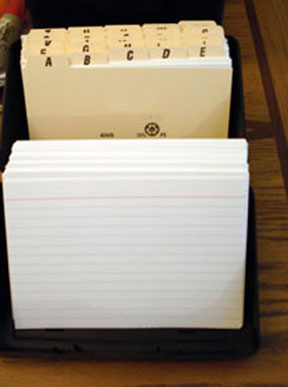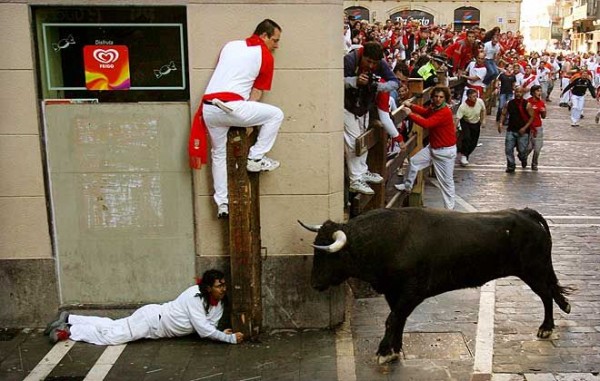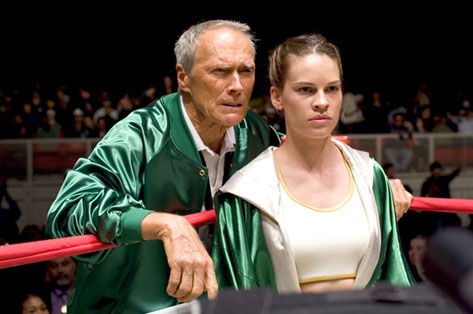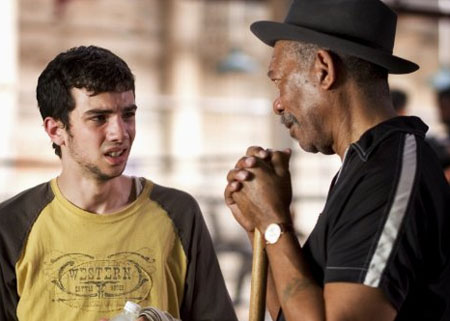The Hangover Part II teaser trailer
The boys (a.k.a. “The Wolfpack”) are back! Read more
The boys (a.k.a. “The Wolfpack”) are back! Read more
You want to avoid any material that only exists to establish, to set up, to explain, and to transition into another scene. Avoid the static “Talking Heads” scenes and the characters telling us directly about themselves.
Most of all… SHOW CHARACTER THROUGH ACTION! Read more
A “set piece” is a clever, memorable sequence that captures the style and theme of a movie, often utilizing the central conflict of the story. If done well, it’s a “trailer moment,” as it would most certainly make it into the previews.
Think of it in terms of a pitch. When the other party hears you describe the scene, you want them to say “Cool!” Read more
Act Three in your screenplay — the final act — is the race to the finish line. It’s a fast-paced, high stakes push toward the climax, which ideally should be a direct confrontation between your Protagonist and your Antagonist. Read more

The Meet The Parents screenplay is a classic example of a well-executed, high concept comedy that uses every dramatic element and beat of the Story Maps method of screenwriting.
Well, except one. Read more
The massive hit comedy The Hangover employs a brilliant HOOK in its concept that distinguishes the LOGLINE, which is one of the main dramatic elements in the Basic Story Map.
The Hangover was sold on a pitch (there’s actually some controversy over who exactly came up with the idea) and although it’s not my favorite comedy of recent years, I can see how its unique variation on a classic comedy premise sold it to a major studio.
We’ve seen the bachelor party comedy before and the Las Vegas comedy before and the “group of friends bonding and solving their own personal issues through a road trip” comedy before, but we hadn’t seen this hook… Read more
It’s that time of year again and we’re all making our New Year’s Resolutions.
Or are you avoiding them, like me? (In my defense, I’m just now finishing up a writing assignment and I wanted to maintain my focus on that, so suck on that, haters.)
Ahem. So…let’s give each other a kick in the pants, shall we? Here’s some advice, take it or leave it… Read more
It was a bygone era known as the late 90s. I stepped out of the elevator on the 7th floor of the Tribeca Film Center into the lobby of Miramax Films and saw the above poster, beautifully framed, for an upcoming movie named Shakespeare in Love. Read more

Beware paper cuts. And fun!
Anyone else use the old-fashioned, classic index cards to compile your scene list?
Sure, your screenwriting software has a super-cool 3D index card “mode” and you can drag-and-drop those shiny digital cards all you want and the edges will never fray and the ink will never smudge because there’s no edges and no ink.
But it’s just not the same. Read more
We watched The Wizard of Oz over the weekend in one of its many post-Thanksgiving television airings and I couldn’t help but think “One classic holiday movie down, several more to go!”
My list of favs includes A Christmas Story, Die Hard, Christmas Vacation, Planes, Trains and Automobiles and the granddaddy of them all…It’s a Wonderful Life, the classic film directed by Frank Capra with a screenplay by six credited writers.
This reminded me of an old article of mine that was published in Script magazine way back in November 2002, so I decided to update it with some new analysis and Story Maps links… Read more
Rocky, written by Sylvester Stallone and directed by John Avildsen, is a classic American film and screenplay. It has become the template for so many sports films and what have come to be known as “underdog” stories.
Rain Man is one of those films that has suffered from its success. It’s easy to dismiss at it as a kitschy piece of 80s melodrama, yet another Tom Cruise vehicle in which he plays a man-child with father issues. Dustin Hoffman’s autistic savant Raymond has been copied and mocked so many times that it may seem like a pop culture joke now. The movie cleaned up at the box-office and at the Oscars, so it doesn’t need any more lauding, right?
But watch it again. It’s Hollywood storytelling at its best. There is no doubt that Rain Man is a great film and it all began with the script by Ron Bass and Barry Morrow.
Read more

Are there only seven basic stories or is it more like 36 dramatic situations? Or does it all boil down to Man vs. Nature, Man vs. God and Man vs. Himself? I’ll answer those questions with a question.
Who cares?
I thought I knew everything about Raiders of the Lost Ark until I Story Mapped it out. There is essentially a “soft” climax — Indy and Marian are strapped to a pole and rendered inactive. The day is won, but not at the hand of Indiana Jones. Our big action-adventure hero is essentially inactive in the climax, or is he?

[audio:http://traffic.libsyn.com/storymapspodcast/Episode_Four_-_Inception_Podcast_1.mp3]
Christopher Nolan and his co-screenwriter Jonathan Nolan used the Story Maps method to structure the screenplay of Inception. If you analyze the narrative, you will see every one of the elements of the “Basic” and “Full” Story Map.
The most important element in the Inception screenplay is the GOAL of the protagonist, COBB, played by Leonardo DiCaprio. It is so important to this particular story that it covers up potentially problematic story decisions and inhabits three of the nine main dramatic elements in the Basic Story Map…

I can give you the TOOLS — the professional screenwriting how to — to write a great movie screenplay or television script. My method is called Story Maps Screenwriting and it is the most simple, clear and effective roadmap to take you from your initial concept all the way to a polished draft that you can submit to agents, managers and producers in the movie industry in Hollywood. Read more
The First Trial is the first test of the commitment that your protagonist made at the end of Act One when they made that active decision that pushed them and us into the second act. This must be a setback…a failure…thus there is a First Casualty…
The Story Map breaks down your narrative into its eight main dramatic elements, the four major story engines and the ten crucial story beats that must be in the same order and must fall in specific page points in your screenplay, no matter the genre.
Learn more about Story Maps and buy the new E-Book Story Maps: How to Write a GREAT Screenplay.
Good luck and happy writing!
-Dan
The first ten pages of your script must establish the world of your story, set up a compelling conflict with intriguing characters, establish your skills on the page and suck in the reader.
Related: Don’t Suck, Suck in the Reader!

Million Dollar Baby is an incredibly focused story. Screenwriter Paul Haggis achieves what I call “story cohesion” by making sure that every element logically flows from strong main dramatic elements while generating dramatic conflict.
The first level of focus is on a crucial element in the “Basic” portion of my outline method which is called Story Maps Screewriting: Theme.
Every character is pursuing a second chance and the character construction, goals and plot beats reflect this. This pursuit is most often shown with active devices, i.e. visual devices as opposed to just being “told” in dialogue. A simple example of this would be the letters from Frankie’s estranged daughter, returned to him unopened, which set up his failure as a father in the past that he hopes to make up for when he gets his second chance to father Maggie. But Haggis knows the letters, although an elegant device, are a bit too simplistic on their own so he builds in active scenes to illustrate Frankie’s inner struggle (e.g., Frankie at church, Big Willie leaving him for another trainer, Scrap admonishing him for being too controlling when he was a fighter).
Let’s look first at the two main characters…
FRANKIE DUNN (Clint Eastwood): Second chance as a trainer and father.
MAGGIE FITZGERALD (Hilary Swank): Second chance as a boxer and a daughter.
…and at two of the supporting characters…
SCRAP (Morgan Freeman): Second chance at being a boxer, or, retiring from boxing on a win.
DANGER (Jay Baruchel): fulfillment as a real boxer.
Danger is the boxer who only has the heart, but not the talent, whereas Shawrelle has the talent but no heart, and Maggie has BOTH.

So we see how the other boxers are written so as to highlight what makes Maggie special (again, using active, shown devices for character development and plot progression).
SPOILERS AHEAD — But if you’re serious about screenwriting you’re here to analyze movies not just watch them (nice guilt trip, huh?).
The story pushes Frankie and Maggie to a FINAL DECISION. The catalyst for this final decision is the big beat — the crippling of Maggie — which is initially shocking to any first-time audience member. But it is the perfect method to show how she has truly been fulfilled by her experience with Frankie — she got her second chance at a better life and she was satisfied by it — which forces Frankie to decide between his own selfish needs and the best wishes of his adopted daughter.
Frankie tells Maggie that he has plans for her when she gets out of the hospital. Maggie tells Frankie that she saw the world, she heard people chanting her name, she fought for the title. That’s enough. She is ready to die.
Maggie is a young woman who was left by the only man who ever loved her: her daddy. Frankie is an older man whose daughter left him. They give each other a second chance, the possibility of redemption. In the end, Frankie makes his final decision, the ultimate conflict: to decide to facilitate the death of his most beloved. In essence, to give up his chance at salvation for Maggie. For a man who’s been paying for his past sins for decades, it is this final, most painful act that redeems him as he succeeds at being the best father and trainer he can be.
-Daniel Calvisi
https://actfourscreenplays.com/
copyright (c) Daniel Calvisi
No matter if you’re just starting out or have written several scripts, I can help you to achieve your goals.
Good luck and happy writing!
-Dan
